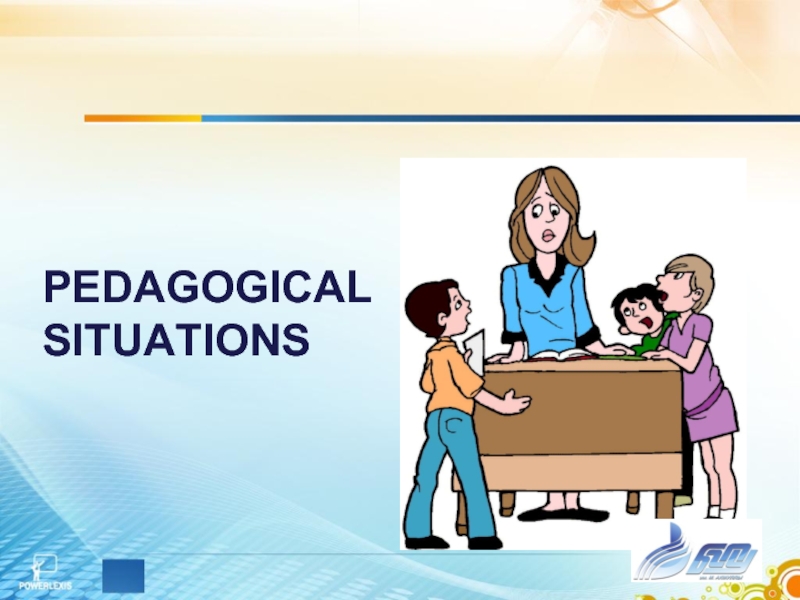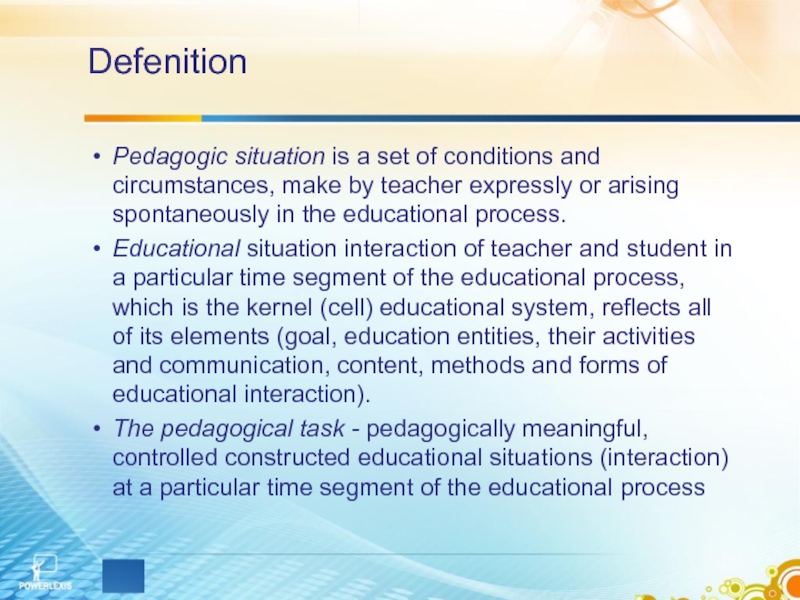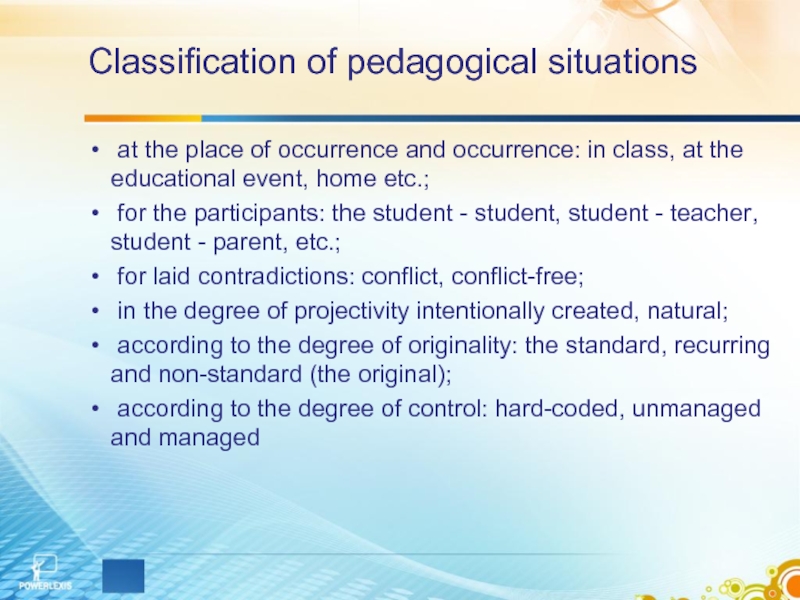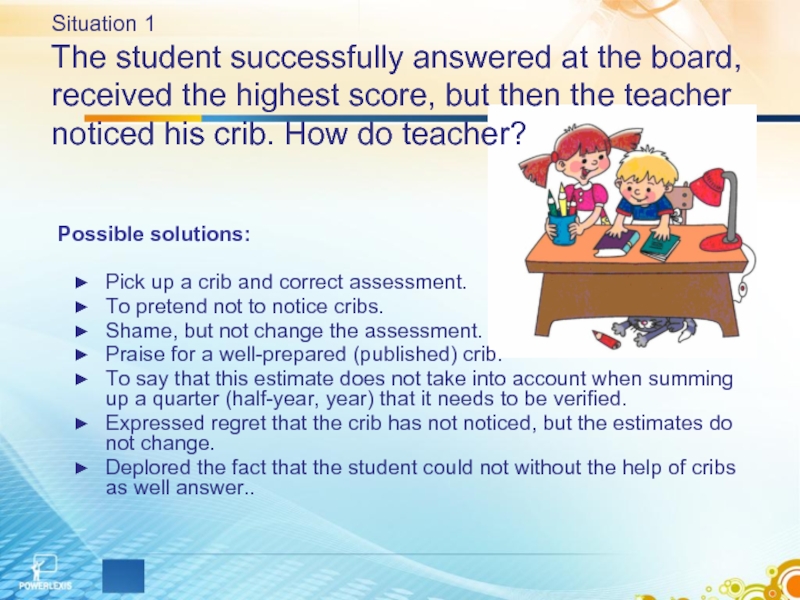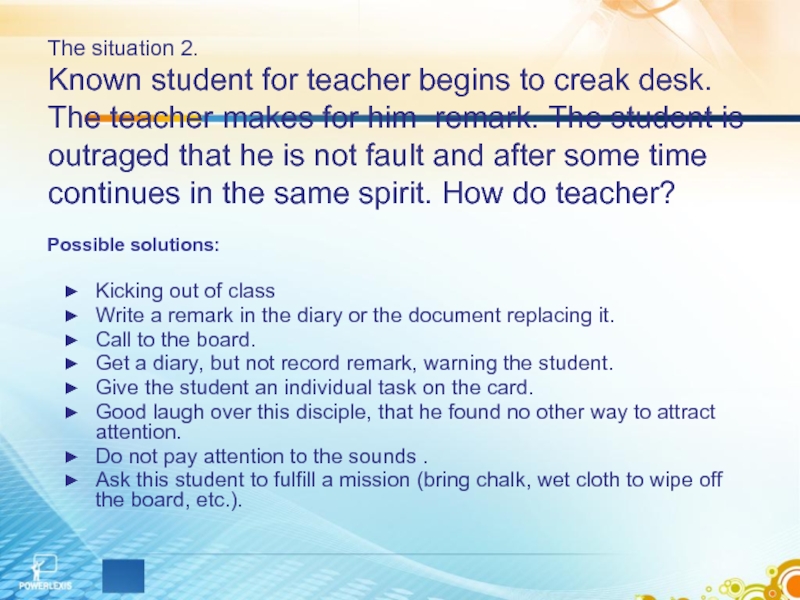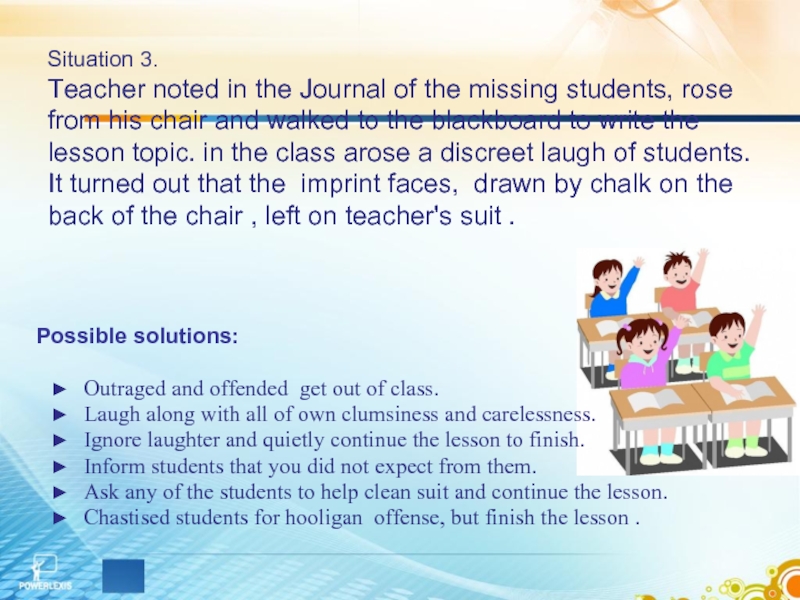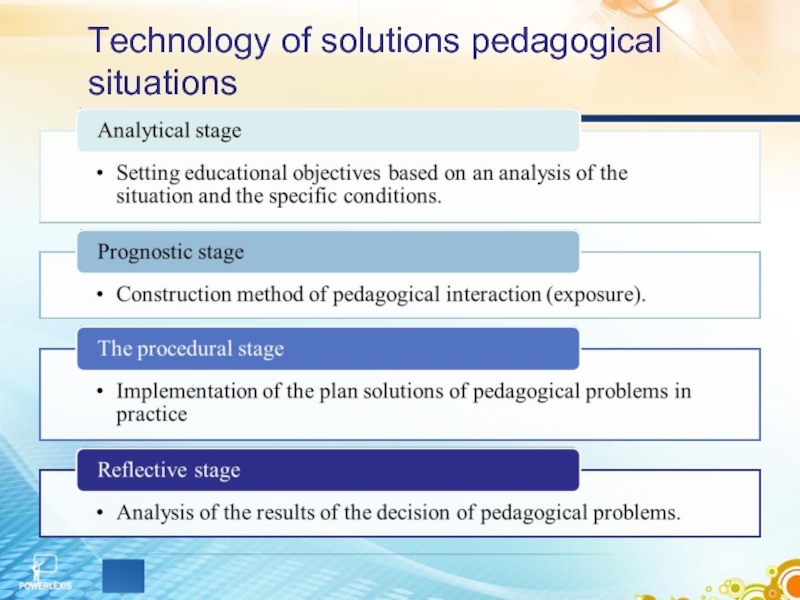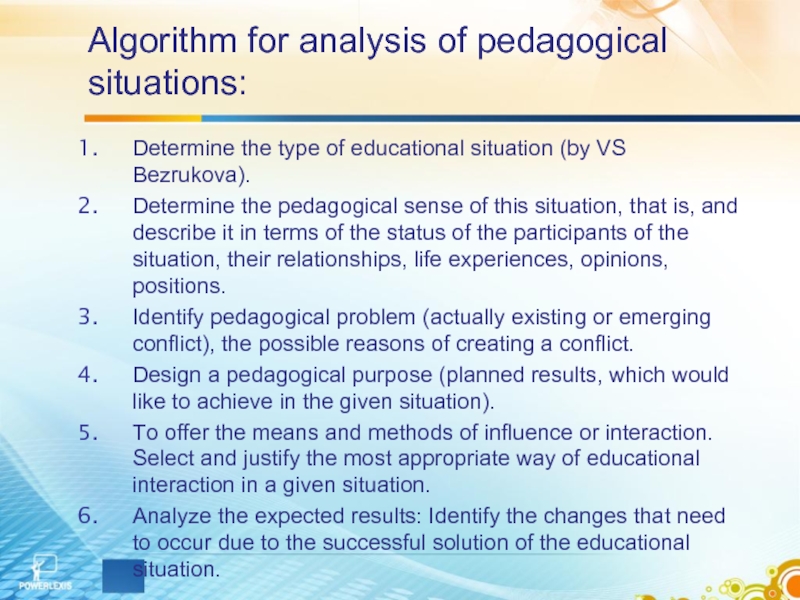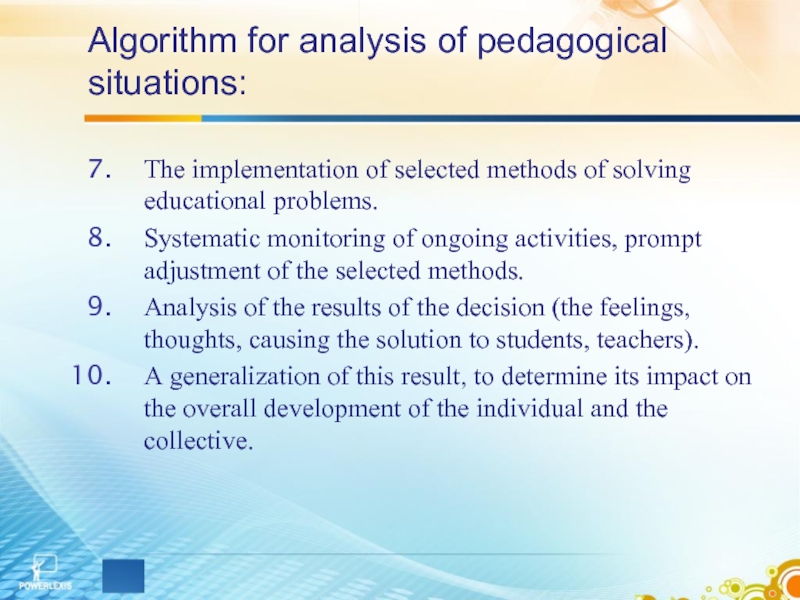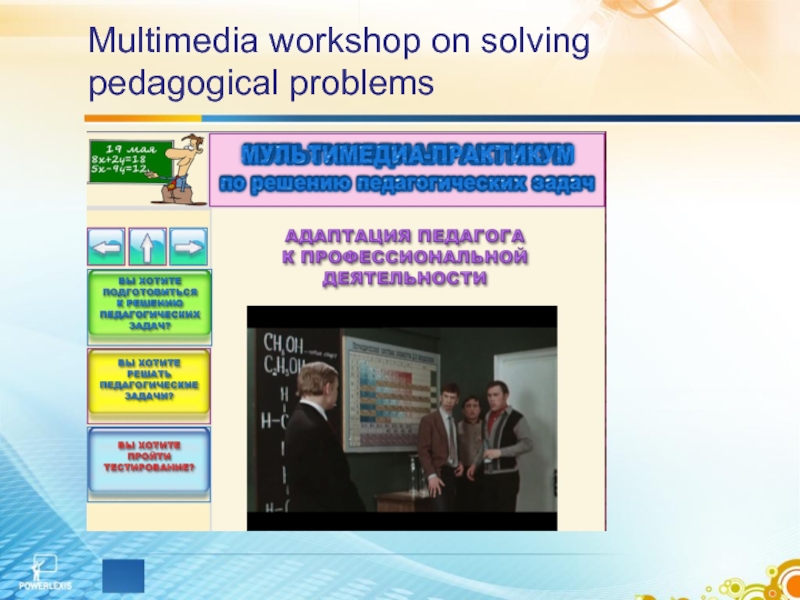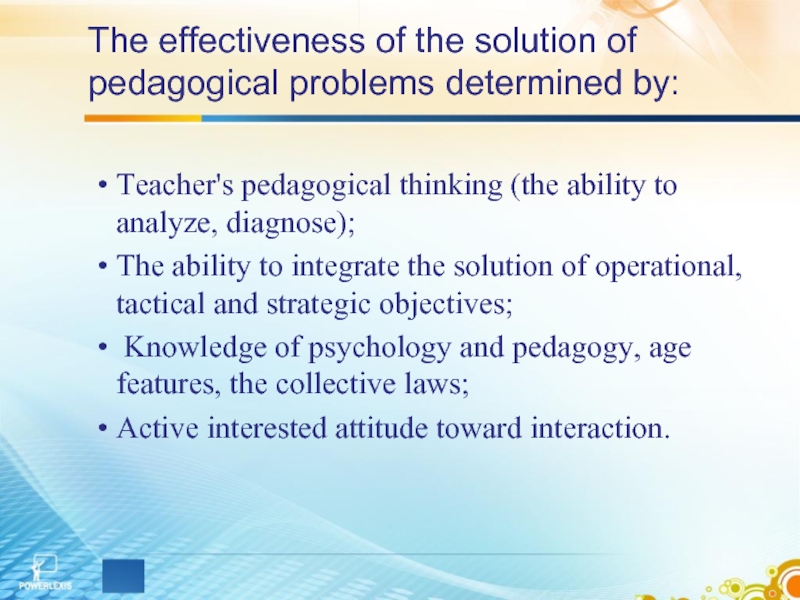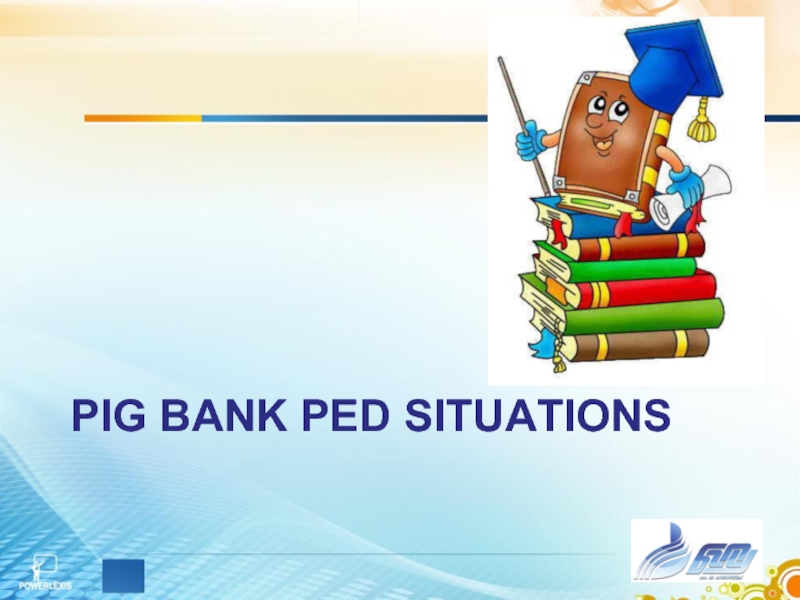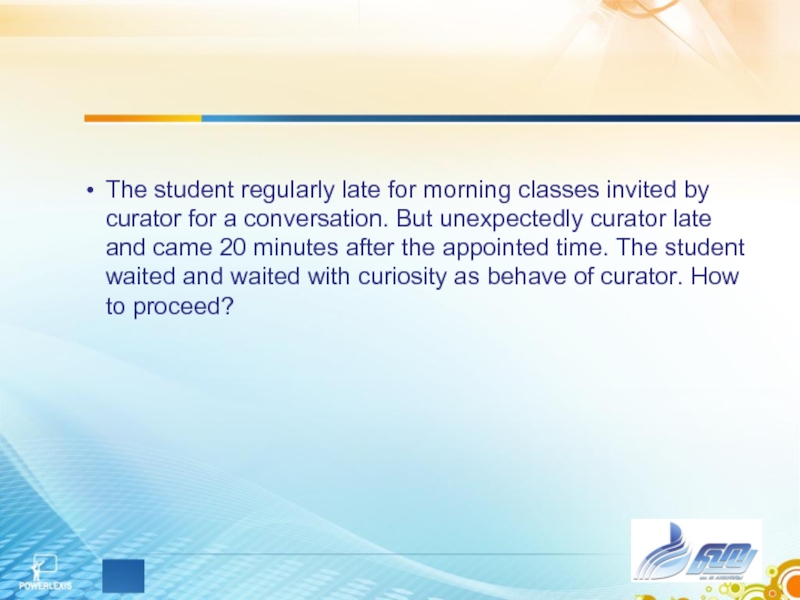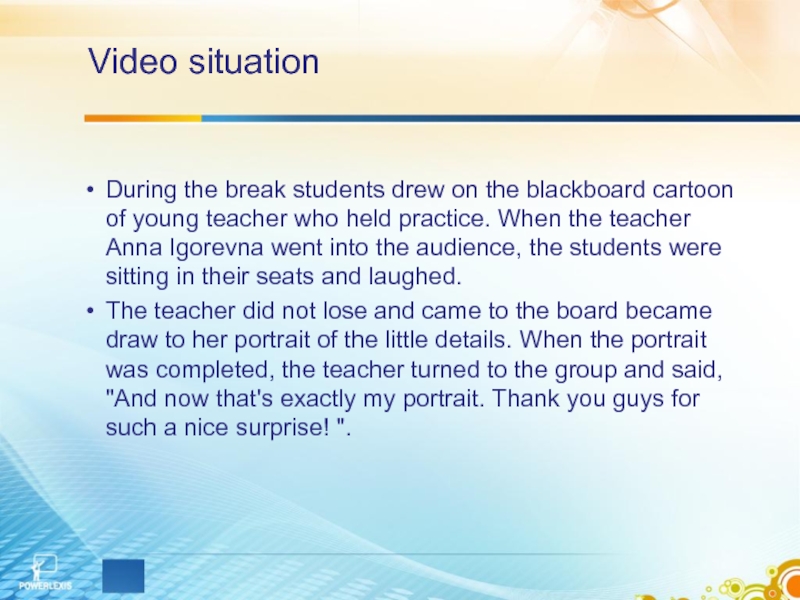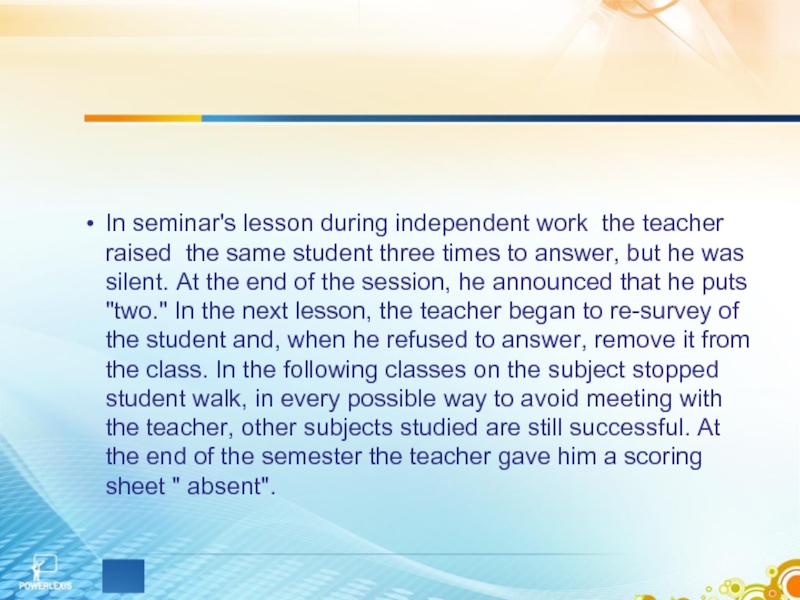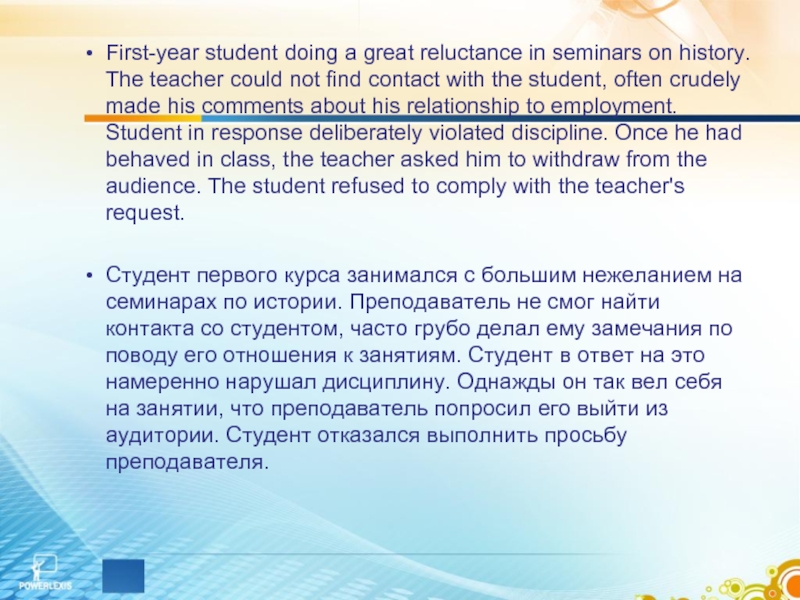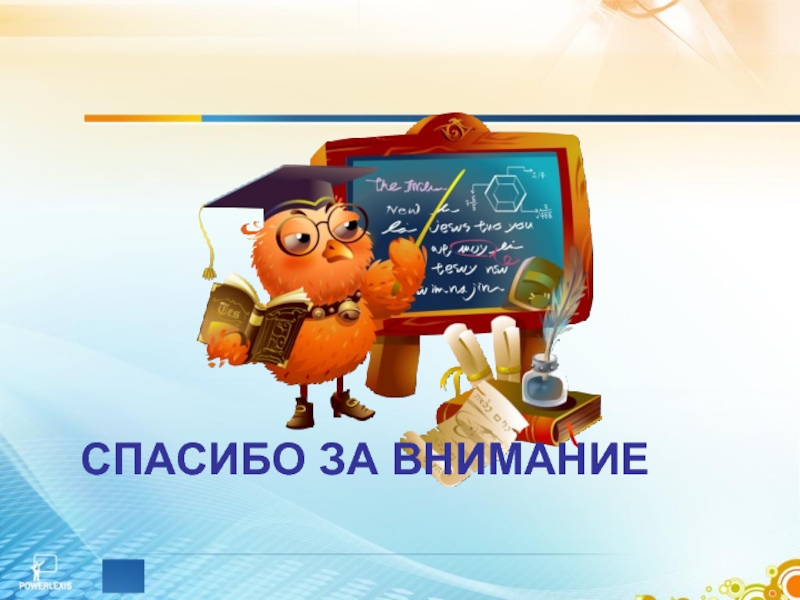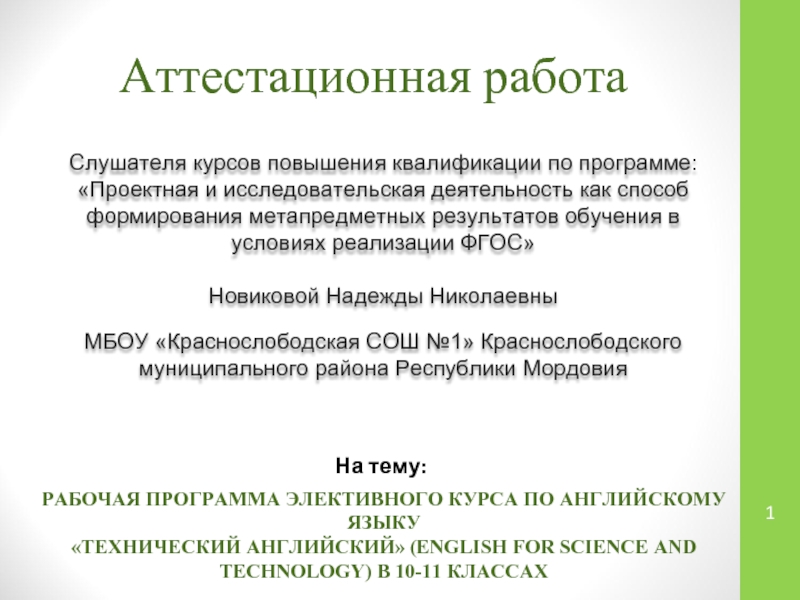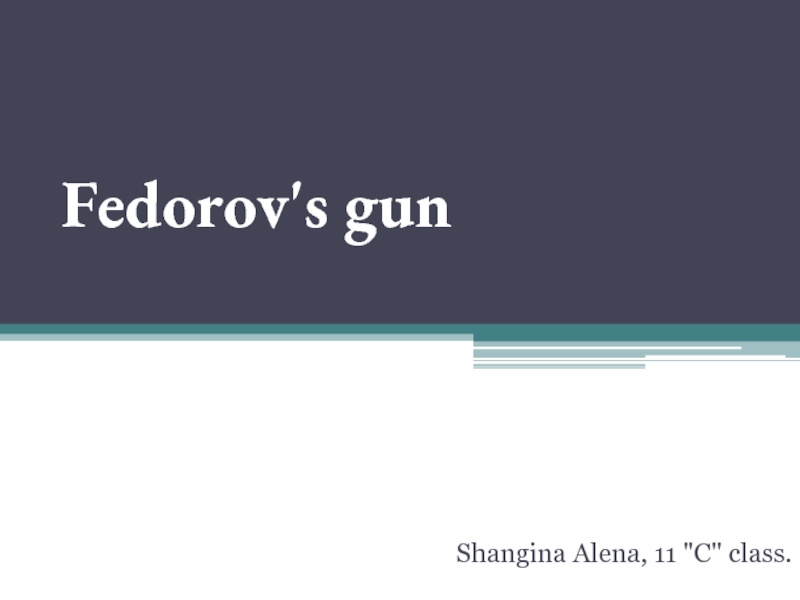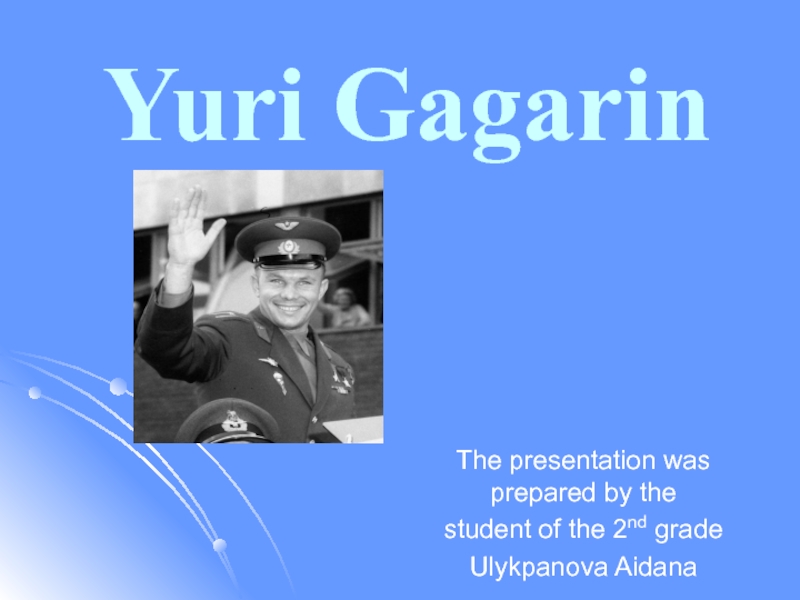- Главная
- Разное
- Дизайн
- Бизнес и предпринимательство
- Аналитика
- Образование
- Развлечения
- Красота и здоровье
- Финансы
- Государство
- Путешествия
- Спорт
- Недвижимость
- Армия
- Графика
- Культурология
- Еда и кулинария
- Лингвистика
- Английский язык
- Астрономия
- Алгебра
- Биология
- География
- Детские презентации
- Информатика
- История
- Литература
- Маркетинг
- Математика
- Медицина
- Менеджмент
- Музыка
- МХК
- Немецкий язык
- ОБЖ
- Обществознание
- Окружающий мир
- Педагогика
- Русский язык
- Технология
- Физика
- Философия
- Химия
- Шаблоны, картинки для презентаций
- Экология
- Экономика
- Юриспруденция
Pedagogical situations презентация
Содержание
- 1. Pedagogical situations
- 2. Defenition Pedagogic situation is a set of
- 3. Classification of pedagogical situations at
- 4. Situation 1 The student successfully answered at
- 5. The situation 2. Known student for teacher
- 6. Situation 3. Teacher noted in the Journal
- 7. Technology of solutions pedagogical situations
- 8. Algorithm for analysis of pedagogical situations: Determine
- 9. Algorithm for analysis of pedagogical situations: The
- 10. Multimedia workshop on solving pedagogical problems
- 11. The effectiveness of the solution of pedagogical
- 12. PIG BANK PED SITUATIONS
- 13. The student regularly late for morning
- 14. Video situation During the break students drew
- 15. In seminar's lesson during independent
- 16. First-year student doing a great reluctance
- 17. СПАСИБО ЗА ВНИМАНИЕ
Слайд 2Defenition
Pedagogic situation is a set of conditions and circumstances, make by
Educational situation interaction of teacher and student in a particular time segment of the educational process, which is the kernel (cell) educational system, reflects all of its elements (goal, education entities, their activities and communication, content, methods and forms of educational interaction).
The pedagogical task - pedagogically meaningful, controlled constructed educational situations (interaction) at a particular time segment of the educational process
Слайд 3Classification of pedagogical situations
at the place of occurrence and
for the participants: the student - student, student - teacher, student - parent, etc.;
for laid contradictions: conflict, conflict-free;
in the degree of projectivity intentionally created, natural;
according to the degree of originality: the standard, recurring and non-standard (the original);
according to the degree of control: hard-coded, unmanaged and managed
Слайд 4Situation 1 The student successfully answered at the board, received the highest
Possible solutions:
Pick up a crib and correct assessment.
To pretend not to notice cribs.
Shame, but not change the assessment.
Praise for a well-prepared (published) crib.
To say that this estimate does not take into account when summing up a quarter (half-year, year) that it needs to be verified.
Expressed regret that the crib has not noticed, but the estimates do not change.
Deplored the fact that the student could not without the help of cribs as well answer..
Слайд 5The situation 2. Known student for teacher begins to creak desk. The
Possible solutions:
Kicking out of class
Write a remark in the diary or the document replacing it.
Call to the board.
Get a diary, but not record remark, warning the student.
Give the student an individual task on the card.
Good laugh over this disciple, that he found no other way to attract attention.
Do not pay attention to the sounds .
Ask this student to fulfill a mission (bring chalk, wet cloth to wipe off the board, etc.).
Слайд 6Situation 3. Teacher noted in the Journal of the missing students, rose
Possible solutions:
Outraged and offended get out of class.
Laugh along with all of own clumsiness and carelessness.
Ignore laughter and quietly continue the lesson to finish.
Inform students that you did not expect from them.
Ask any of the students to help clean suit and continue the lesson.
Chastised students for hooligan offense, but finish the lesson .
Слайд 8Algorithm for analysis of pedagogical situations:
Determine the type of educational situation
Determine the pedagogical sense of this situation, that is, and describe it in terms of the status of the participants of the situation, their relationships, life experiences, opinions, positions.
Identify pedagogical problem (actually existing or emerging conflict), the possible reasons of creating a conflict.
Design a pedagogical purpose (planned results, which would like to achieve in the given situation).
To offer the means and methods of influence or interaction. Select and justify the most appropriate way of educational interaction in a given situation.
Analyze the expected results: Identify the changes that need to occur due to the successful solution of the educational situation.
Слайд 9Algorithm for analysis of pedagogical situations:
The implementation of selected methods of
Systematic monitoring of ongoing activities, prompt adjustment of the selected methods.
Analysis of the results of the decision (the feelings, thoughts, causing the solution to students, teachers).
A generalization of this result, to determine its impact on the overall development of the individual and the collective.
Слайд 11The effectiveness of the solution of pedagogical problems determined by:
Teacher's pedagogical
The ability to integrate the solution of operational, tactical and strategic objectives;
Knowledge of psychology and pedagogy, age features, the collective laws;
Active interested attitude toward interaction.
Слайд 13
The student regularly late for morning classes invited by curator for
Слайд 14Video situation
During the break students drew on the blackboard cartoon of
The teacher did not lose and came to the board became draw to her portrait of the little details. When the portrait was completed, the teacher turned to the group and said, "And now that's exactly my portrait. Thank you guys for such a nice surprise! ".
Слайд 15
In seminar's lesson during independent work the teacher raised the same
Слайд 16
First-year student doing a great reluctance in seminars on history. The
Студент первого курса занимался с большим нежеланием на семинарах по истории. Преподаватель не смог найти контакта со студентом, часто грубо делал ему замечания по поводу его отношения к занятиям. Студент в ответ на это намеренно нарушал дисциплину. Однажды он так вел себя на занятии, что преподаватель попросил его выйти из аудитории. Студент отказался выполнить просьбу преподавателя.
